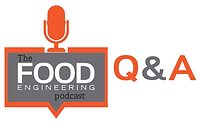Podcast: AI and robotics in pet food processing
How pet food processors are adapting AI, robotics and automation strategy

Automation, artificial intelligence and robotics are becoming a staple of food and beverage processing, and the pet food market is no different. Processors are exploring ways to integrate these technologies throughout the process, from the time ingredients come in the door until the time finished product is loaded on a truck.
But one of the challenges of automating food production is that ingredients and products aren’t always a consistent size and shape. That adds a degree of difficulty to automating the entire production process as opposed to one aspect of it such as palletizing.
As part of the Food Engineering podcast series, I spoke to Tyler Cundiff, President, Food and Beverage Market, Gray, and Greg Powers, VP of Solution Architecture for Gray Solutions to gain some insights on how the pet food industry is adopting automation, AI and robotics. A partial transcription is below.
Food Engineering (FE): Are there typical areas of the process that food processors look at and say, "OK, this is where we should definitely be using AI and robotics." Is it kind of throughout the whole process? Or is there a specific part of it, where it really makes sense to look at some of these solutions?

Greg Powers, Gray Solutions (GP): When you get into robotics, at the palletization, that's been a common trend, it's been done for a long time, we've always had palletizer robots and things like that. The way it's changed a little bit is in the different areas within like quality inspections, the robot with the vision systems can be better at picking out quality defects and things like that. So, it's really kind of it's growing a lot.
Any type of grading of a product is very popular. So, typically, you would have someone there doing the inspections, but now you have the vision systems and the robots that actually take out bad product or at least look at and visualize the product and make better decisions. I think that's where we're at right now. So, there's a lot of areas. It's more in the processing side, versus what we've typically done on the packing and the palletizing side.
FE: Right, and you mentioned that packing and palletizing has been around for a long time. One of the interesting things about food production and pet food production is that once it's in the box, or in the carton, or whatever it can treated like any other kind of product, it can be treated like auto parts, or oil filters, or whatever. But until it gets to that point, it's not necessarily universal size, and shape, and all of that. So, that creates some challenges when you're trying to automate that actual food part of the production process, doesn't it?
GP: The vision systems are the ones that are picking out those abnormalities. The robot is more conditioned on maybe pulling the product off or doing something like that. But the vision system's picking out abnormal food, and looking, they can pick out glass in food, they can do things like that, which has come drastically a long way from where it was before. It's really changing that industry, and the robot is just in place to actually react to that. So, it's really a combination of both of those things that really changed the industry.
FE: There have been a lot of interesting pet food construction projects announced recently. So, at the construction and planning stage, are you starting to see pet food processors planning more for a more automated process? How does that go into the mindset of, OK, we want to build a new plant, here's what we're going to need?

Tyler Cundiff, Gray (TC): A lot of the capital investment that's going into the pet food and pet food manufacturing industry, we are seeing a lot of the high-end type of pet foods that have been growing. Their products are premium, they're building manufacturing infrastructure to be able to meet the demands, the ever-growing global demand. So, these products can be challenging to make, you know, for instance, the high protein content.
I would say that's one area of the manufacturing facility that gets talked about is OK, you almost have somewhat of a meat plant as part of your pet food production facility, and what can you automate there? On some parts of the manufacturing and in packaging it's maybe a lower hanging fruit to explore some cost-effective automation technologies. But on the meat side, it's a little more challenging.
Listen to the full interview here, or click here for more Food Engineering podcasts!
Looking for a reprint of this article?
From high-res PDFs to custom plaques, order your copy today!






